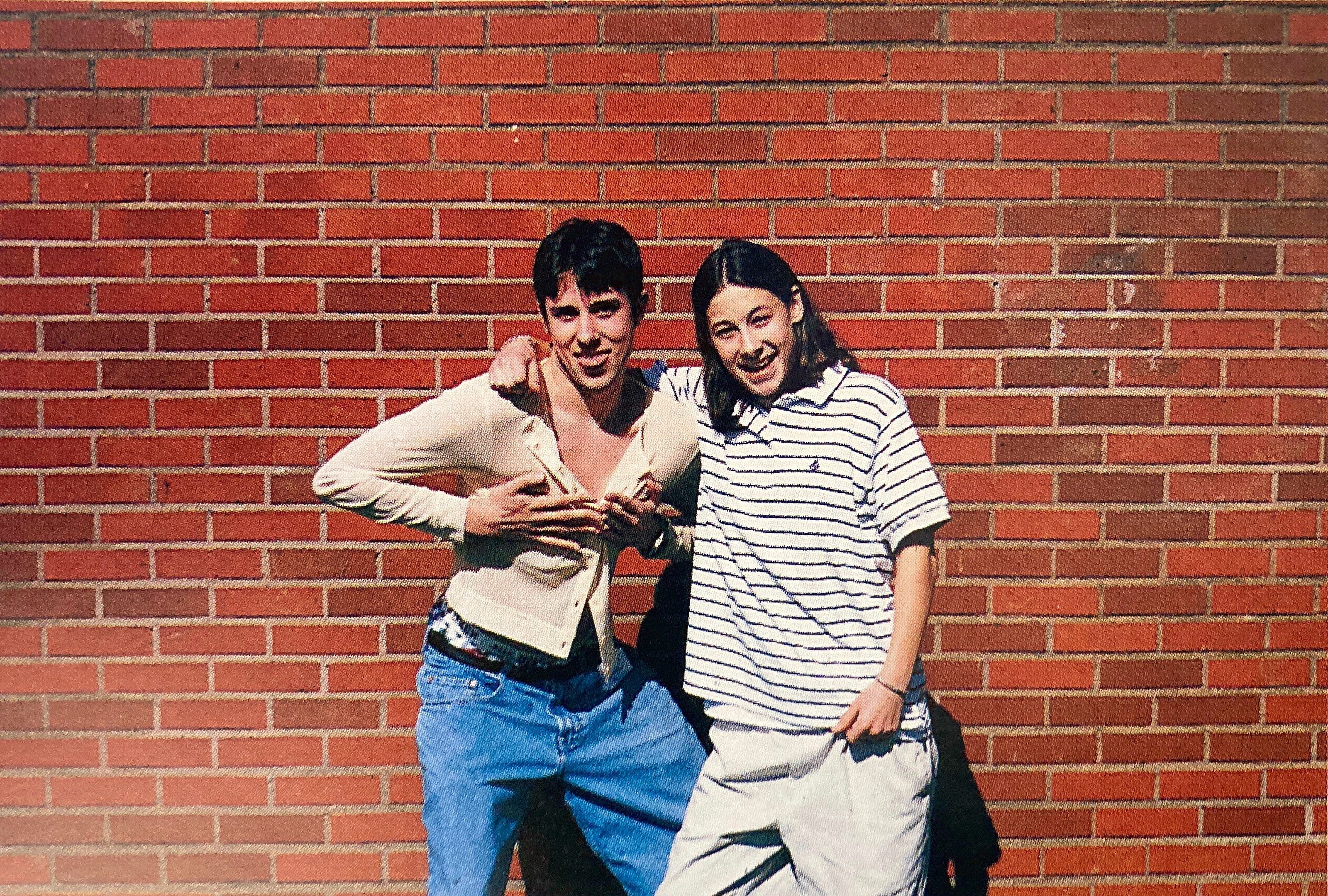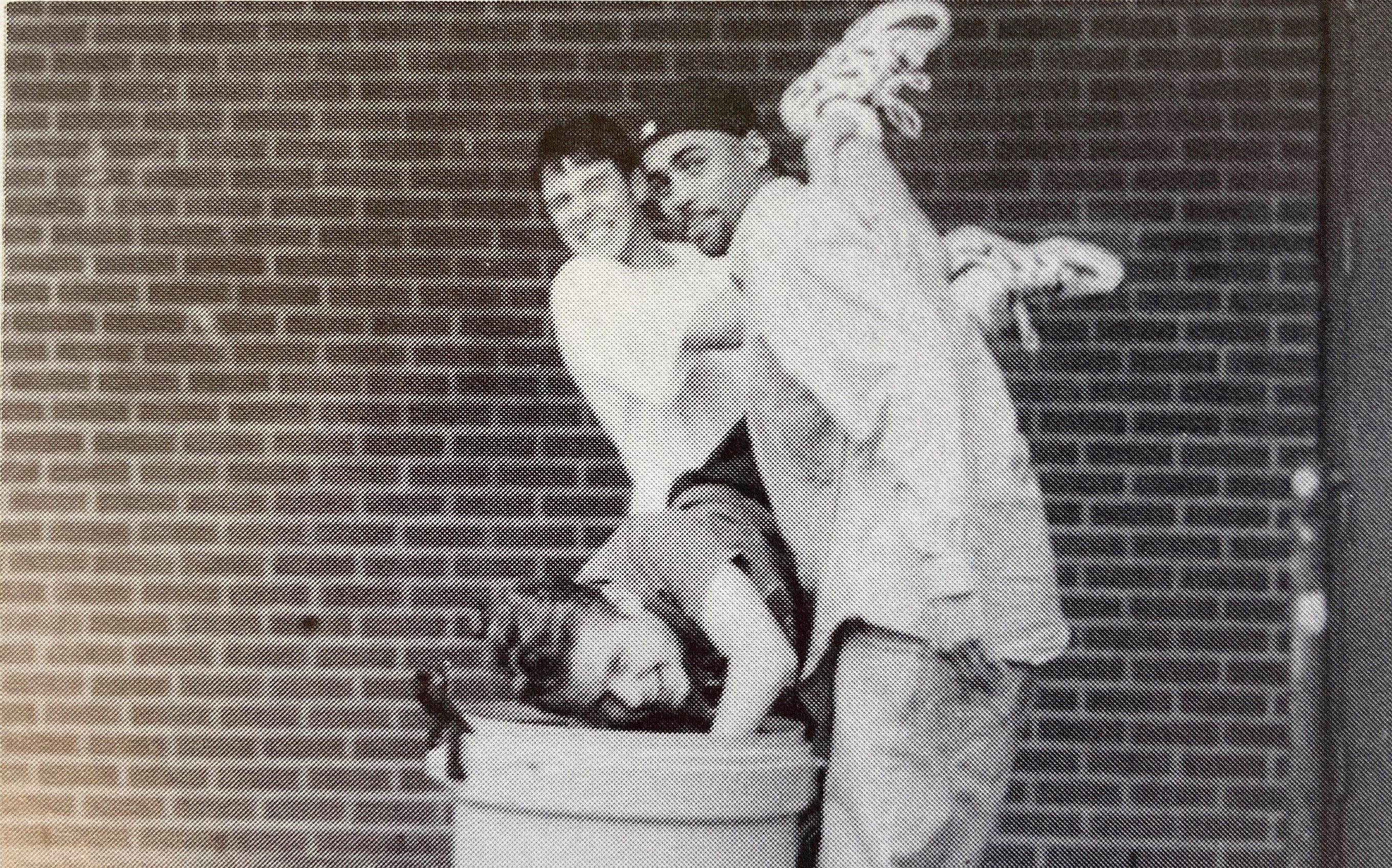
A door jingles. Two men walk into the market. Their pockets rustle. Someone screams. A cash register clangs. The door jingles. A car door slams. An engine starts, idles. A phone dials three digits, shakes with breath, is slammed down. Sirens wail. Tires screech. Easy as pie.
In 1996 and 1997, a string of 19 robberies at local businesses shook the Grant Park neighborhood. In June 1997, the Portland Police Bureau disbanded its robbery unit to save a couple of bucks, according to TIME Magazine. The cut left no one to track a crime pattern that would have tied the culprits in a neat bow after 10 minutes on a crime-mapping computer that the cops didn’t have.
It all came crashing down on the night of Nov. 15, 1997, with a heist gone wrong at the Rustica Italian Cafe at 1700 NE Broadway, the current residence of the Broadway Grill & Brewery. The spree left only one victim — one of the robbers.

At Grant High School, everything was smooth sailing. Tom Curtis and his friend Ethan Thrower were homecoming princes. Curtis was student body president; Thrower was in Royal Blues, Grant’s prestigious chamber ensemble; both were track stars. Curtis had an academic scholarship for the private Roman Catholic Iona College in New Rochelle, New York. Thrower had plans to attend West Virginia Wesleyan College in Buckhannon, West Virginia. High school was a breeze. They were untouchable.
Before his 19th birthday, Curtis was an international fugitive.
…

Curtis and Thrower were raised in typical upper-middle-class households. Two parents, extracurriculars. They were not disadvantaged. They were not in a gang. They did not fit the cookie-cutter criminal. They were “us,” not “them.” What happened?
Curtis was rebellious and a wisecracker, a natural leader through and through. He was always making jokes, often at the expense of others. Teachers and peers alike told The Oregonian and TIME Magazine that he didn’t know where to draw the line.

In high school, Curtis tangled with Grant administrators and the police; his peers loved it. It was likely his notoriety for standing up to authority that got him elected as student body president.
His campaign speech at the beginning of his senior year solidified his high-school demigod status that earned him the student-voted “Funniest” yearbook superlative. It also cemented him as a perpetual disruptor for teachers. In his speech, which former Grant principal Toni Hunter told The Oregonian did not have administrative approval, Curtis mocked most of the Grant staff, disturbing even the faculty with whom he had historically gotten along well. Some teachers had not wanted him to be allowed to run for student government in the first place, citing chronic tardiness, at least one suspension and the “F” he received from his sophomore Japanese teacher, The Oregonian reported.
The campaign speech was not Curtis’ first tussle with authorities. On Aug. 21, 1997, Curtis and a group of his friends had a run-in with police after he had gotten tired of waiting in line for snacks at a 7-Eleven and had walked out without paying. When confronted by the 53-year-old clerk, Curtis punched her in the face. Curtis was held by police — during which he and his friends hurled obscenities at the officers and threatened lawsuits. Curtis suffered a one-and-one-half-inch bite from a police dog on his right thigh. Handcuffed on the sidewalk, he apologized, admitting to shoplifting, assaulting the clerk and hearing officers’ warnings about the police dog.
According to The Oregonian, Curtis was arrested for rioting, third-degree robbery, resisting arrest and disorderly conduct; all but the robbery charge was dropped. “You’re not looking at the profile of a serial robber,” a friend of Curtis’ told Willamette Week.
Thrower didn’t have the same hunger for controversy, but he was no loner. He won Grant’s 1998 senior superlative for “Best Dressed.”
“I just remember how shocked we all were about what was coming out because (Thrower) was a real member of that group,” says Kris Wallsmith, a Grant alumnus and junior in Royal Blues when Thrower was a senior, “He was a nice guy and the things we were learning didn’t make sense.”
Kids get bored. They try drugs, have unprotected sex, drive fast down residential streets. Usually, they grow up, graduate and move on with their lives. Sometimes they don’t.
Curtis and Thrower got bored. They started stealing cars during their junior year, testing their limits, egging each other on, seeing who would say they had gone too far first. They upped the ante on Nov. 10, 1996. According to TIME Magazine, Curtis and an unnamed accomplice — likely Thrower — pointed a gun at a Howard Johnson’s manager and counted to 10. The boys walked away with pockets full of cash.
According to his indictment, Curtis hit a Baskin-Robbins just over two weeks later. He robbed the shop twice — the same employee was working both times. Curtis and Thrower stayed in the Grant neighborhood, seeming to have a particular love for NE Broadway. They also robbed Beaumont Market three times.
They would don ski masks, grab handguns — one of which did not work — and burst in, yelling and waving the guns like they do in the movies. They demanded patrons lie on the floor; they collected wallets and held guns to clerks’ heads. When a job was going especially well, they would get sugar-sweet, patting customers’ shoulders and apologizing for the inconvenience. They kept it local, but they got bolder, enlisting friends; Celia Reynolds, who the two enlisted as a getaway driver, had been Thrower’s friend since middle school; Todd Seymour — Curtis’ student body vice president — participated in the final two robberies.
On the night of Nov. 15, 1997, just over a year after their first heist, Curtis and Thrower tried to rob Rustica Italian Cafe — they had given up on the guarded storeroom at the Lloyd Center Nordstrom where Curtis worked after someone recognized him while casing the store.
Thrower shot himself in the groin while shoving his gun into his waistband. A few minutes later, Curtis called 9-1-1, reporting first that his friend had been shot in a dispute. It took the police months to link the Chevrolet Suburban Curtis and Thrower had stolen as their getaway vehicle to the Rustica robbery — Thrower’s dried blood on the passenger seat eventually led police to the teenager. He was arrested at school on Apr. 16, 1998, the day before Grant’s senior prom.
A few days later, against the wishes of Grant choral director Doree Jarboe, most of the 1998 Royal Blues left school and headed to the courthouse. Thrower sat facing the judge. “Folks were trying to reach out and just put their hand on his shoulder to offer him support,” says Wallsmith, “It was so jarring to see someone so suddenly trapped in that system. Just a week before he had been singing like any of the rest of us.”
Curtis’ world was crumbling, but he stayed for prom at the request of his girlfriend. After the dance, he vanished. He stayed around Portland, sleeping and showering where he could, earning some cash when he needed it. Police did not issue a warrant for his arrest for a couple of days, meaning initial help from friends and family was not illegal. He kept a step ahead of the Portland Police Bureau’s robbery unit, which had been reinstated in early 1998.
Curtis skyrocketed to national infamy when 37 members of the Grant class of 1998 held a graduation party in Mazatlán, Mexico. Word got out that Curtis might attend, but local cops decided against sending anyone — they were not the FBI. Curtis did show up, drinking beer and enjoying the sun. Some were glad to see their buddy, but the meeting was tense. Nobody talked about the robberies. Nobody called the authorities. It did not get out that anyone had been in contact with Curtis until after everyone had returned to Portland.
Curtis knew he could not go back home now — he ran to Mesa, Arizona. He applied for a job at the Fountain Cafe with his real name and Social Security number. He fell back on the old Curtis charm, befriending the owners of the cafe and working hard at his job.
Portland cops looked inept for letting Curtis get away again — their bad reputation was exacerbated by reporting from The Oregonian on the Mazatlán trip. Detective Sgt. Kelly Krohn appeared on the television show “America’s Most Wanted”’s segment on the crimes. Curtis saw it and took off for the fourth time, heading to Las Vegas. He called his father at around 2:00 a.m. on July 29, 1998, from a Tropicana Resort Casino, too tired to keep running. FBI agents arrested him about an hour later.
Curtis pled guilty to 19 counts of armed robbery, according to The Oregonian, and was forced to pay over $8,000 in restitution. His bail was set at $4.74 million, according to The New York Times. He served 12 years and was released on Sept. 4, 2009. “Records show he lives a quiet life in Oregon,” reported Willamette Week.
In a note to The Oregonian in 2000, Curtis declined an interview, but said that he “would like to dissuade kids from acting as mindlessly as (himself).”
Grant High School had been marred by Thrower’s on-campus arrest and the searchlight that had been turned on the school by Curtis’ international goose chase. Principal Toni Hunter and Grant administration did their best to sweep the unsavory incident under the rug, focusing instead on lackluster test scores in the first-day assembly speech for the 1998-1999 school year. “I don’t even know how we just took that on as information, you know, as something that happened and then (went) on about (our) lives,” says Wallsmith.
While Grant did its best to move on, Thrower and Curtis were left behind bars. “I would drive down the street that (Thrower) lived on and (his) truck would just be sitting in the driveway there,” says Wallsmith, “I think at some point (his family) put a cover on it. So it was just covered and waiting for him, was what it seemed like.”
Thrower served eight-and-a-half years. His mother wrote him a letter every day that he was incarcerated — 3,103 in all.
Thrower was not allowed to acquire debt in prison, but he took any college classes he could afford by mail. Within months of being released, he was enrolled at Portland State University. He graduated in 2009 and is now married with two daughters. He works as a school social worker for Open School East and is the president of Global Works Community Fund.
He released a book, “A Kids Book About Incarceration,” under A Kids Co. in 2022. In it, Thrower talks about his experiences while incarcerated — the opposite walls that he could touch simultaneously when standing in the middle of his cell; the inability to choose what to eat; the dehumanization of becoming just another uniform: “My name became a number,” writes Thrower.
The book also breaches the topics of wrongful conviction and mass incarceration.
Millions of incarcerated Americans will not have the same opportunities that Thrower has had during or post-incarceration.
The lasting effects of incarceration are numerous and far-reaching, from loss of the right to vote to the United States’ high recidivism rate (the percent of people who are re-arrested after being released from prison). Average state youth recidivism rates after only a single year was 55% in 2017, according to the Office of Juvenile Justice and Delinquency Prevention.
The Oregon Justice Resource Center is working to “frustrate and dismantle mass incarceration in Oregon,” according to their website. One of their core programs, the Youth Justice Project, empowers young people to stay out of the criminal justice system and protects incarcerated youth from extreme sentences for offenses committed when the brain is still developing. Tom Curtis and Ethan Thrower committed 19 armed robberies before they left their teenage years. Their brains would not fully develop for over half a decade — by then, they were both serving time in adult penitentiaries.
“Young people have this really dramatic ability to change,” says Gabe Newland, the director of the Youth Justice Project, “Each of us is more than the worst thing we’ve ever done.”




